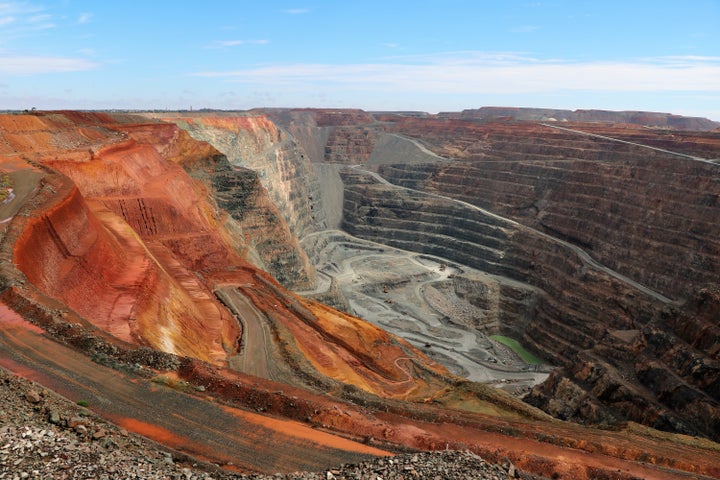Planet Earth has been put on red alert by hundreds of leading scientists who have warned that humanity faces an existential threat within decades if the steep decline of nature is not reversed.
The conclusions of the greatest-ever stock-taking of the living world, published on Monday, show that ecosystems and wild populations are shrinking, deteriorating or vanishing completely, and up to 1 million species of land and marine life could be made extinct by humans’ actions if present trends continue.
Food, pollination, clean water and a stable climate all depend on a thriving plant and animal population. But forests and wetlands are being erased worldwide and oceans are under growing stress, says the Intergovernmental Science-Policy Platform on Biodiversity and Ecosystem Services (IPBES), the United Nations’ expert nature panel, in the landmark global assessment report. The three-year study, compiled by nearly 500 scientists, analyzed around 15,000 academic studies that focused on everything from plankton and fish to bees, coral, forests, frogs and insects, as well as drawing on indigenous knowledge.
If we continue to pollute the planet and waste natural resources as we have been doing, it won’t just affect people’s quality of life but will lead to a further deterioration of earth’s planetary systems, said the IPBES scientists.

“The essential, interconnected web of life on Earth is getting smaller and increasingly frayed. This loss is a direct result of human activity and constitutes a direct threat to human well-being in all regions of the world,” said professor Josef Settele, a research ecologist and co-chair of the 1,800 page report, the summary of which was agreed to by 132 governments meeting in Paris this weekend, including the U.S.
The scale and rapid speed of this decline of nature is unprecedented in human history and is likely to continue for at least 50 years, say the authors of the global study, but can still largely be turned around if governments, businesses and individuals urgently commit to working together to conserve and restore nature, and to use fewer natural resources better.
It will require a concerted worldwide effort to change the way we live, said IPBES chair Sir Robert Watson, a former chief scientist at NASA who has also worked with the U.K. government.
“The whole world is focused on climate change but loss of biodiversity is just as important,” said Watson. “You can’t deal with one without the other. There is a recognition now that biodiversity is an environmental issue, but it’s also about economics and development, too. We have to reform the economic system.”
The global assessment report, which will not be published in full until later this year (only the conclusions have been released), is unique among governmental biodiversity studies because it identifies both the direct drivers of nature’s losses ― such as climate change, agricultural expansion, pollution and the exploitation of oceans and forests ― and the underlying causes.
These indirect drivers are more controversial and include world population, which has doubled since 1970 (from 3.7 billion to 7.6 billion people), the tenfold increase in global trade over the last five decades, the sheer amount of goods that people now buy in rich countries, as well as supply chains, the endless pursuit of economic growth, damaging subsidies and the sharp growth of new technologies, all of which put demands on natural resources.

Unless both direct and indirect drivers are addressed simultaneously, there is little hope of the transformational change needed to avert a planetary crisis, said global assessment lead author Kai Chan, professor at the Institute for Resources, Environment and Sustainability at the University of British Columbia.
“The present system [of environmental protection] has not worked well enough. Governments must get serious about reining in the power of business to regulate itself. We must also focus on supply chains. At present, nature is undermined every time we buy something through the raw materials used or the way goods are produced,” he said.
“Few governments fully understand the magnitude of the problems we face. Most deny the reality of the existential threat we face,” Chan added.
The global assessment report also shows:
• Urban areas have more than doubled in size since 1992, and 100 million hectares of tropical forest were lost from 1980 to 2000.
• Around 25% of animal and plant species are threatened, and around 1 million species already face extinction, many within decades if no action is taken.
• The current rate of species extinction is at least tens to hundreds of times higher than it has averaged over the past 10 million years.
• Nearly half the live coral cover on coral reefs has been lost since the 1870s, with losses in recent decades accelerating due to climate change.
• Two-thirds of the oceans are under stress, and over 85% of wetlands area has been lost.
• The frequency and intensity of extreme weather events have increased in the past 50 years, while the global average sea level has risen by between 6 and 8 inches since 1900.
• Climate change is projected to become increasingly important as a direct driver of changes in nature and its contributions to humanity in the next decades.
• There are around 2,500 conflicts over fossil fuels, water, food and land currently occurring worldwide.

The global assessment report is a critical piece of science, Joyce Msuya, acting executive director of the U.N.’s Environment Program, told HuffPost. “It is a reminder that nature is not a luxury but is the building block of economic growth, food security, livelihoods and health. It tells us there is a window of opportunity to change track.”
The authors collectively call for bold, far-reaching economic and social changes, including paying for large-scale ecological restoration of degraded lands, and strengthening international targets to control climate change and biodiversity loss.
NGOs are among those echoing the call for major, transformative changes. “We must end this war against nature. We must eat less meat, which takes up most agricultural land at the expense of nature, and we must stop treating our oceans like a waste dump while also exploiting their resources to the point of collapse,” said John Sauven, director of Greenpeace.
The good news, said Watson, is that governments have accepted the report. “They know the problem. They cannot disagree with the evidence because they have signed off on it. Now we need action.”
For more content and to be part of the “This New World” community, follow our Facebook page.
HuffPost’s “This New World” series is funded by Partners for a New Economy and the Kendeda Fund. All content is editorially independent, with no influence or input from the foundations. If you have an idea or tip for the editorial series, send an email to thisnewworld@huffpost.com.

